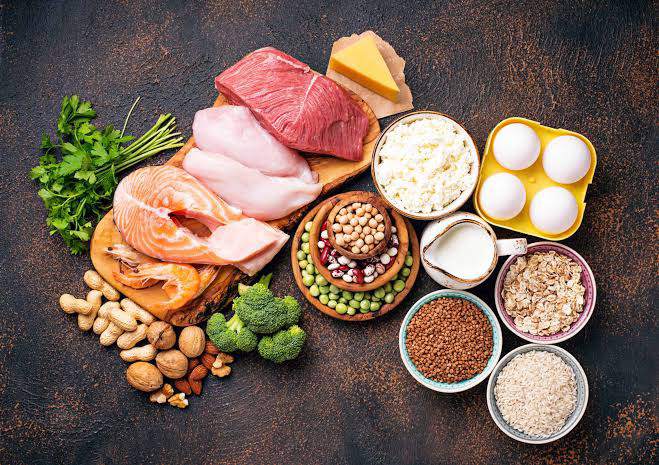Effects of Protein on health
A protein is made up of amino acids (AA), which are joined together by peptide bonds. Proteases and peptidases hydrolyze dietary protein to produce AA, dipeptides, and tripeptides in the gastrointestinal lumen. These digestive products are either consumed by bacteria in the small intestine or absorbed by enterocytes. Amino acids that are not digested by the small intestine are transported to the portal vein and used to synthesize protein in skeletal muscle and other tissues.
Adequate protein intake is one of the most important nutritional variables in maintaining independence, primarily by preventing muscle loss and strength (sarcopenia), frailty, and associated comorbidities in later age. Muscle strength is proportional to muscle mass and diminishes dramatically after the age of 50. A lot of studies have revealed that consuming more than the Recommended Daily Allowance (RDA) may be preferred in maintaining muscle strength and functioning in older persons. Furthermore, the pattern of protein consumption was thought to be more important than the total daily amount ingested.
Optimal Protein Intake (Protein quantity)
The current worldwide Recommended Dietary Allowance (RDA) for protein is 0.8 g per kilogram of body weight (BW), regardless of age. Given that physical activity diminishes with aging, this is an important consideration when assessing protein requirements. Furthermore, the body of an aging adult undergoes a variety of physiological changes that affect protein utilisation and hence needs. In summary, protein requirements vary by individual and are influenced by a variety of factors such as age and health status.
Protein Quality
Animal-based foods are widely regarded as a superior source of protein due to their complete composition of essential amino acids, high digestibility (>90%), and bioavailability. Proteins can be found in milk, whey, eggs, and casein. Thus, limited eating of high-quality unprocessed animal-based meals should not be completely avoided. Chronic high protein intake can cause digestive, renal, and circulatory problems and should be avoided. The quantity and quality of protein determine its nutritional value. As a result, appropriate consumption of high-quality proteins derived from animal products (such as lean meat and milk) is required for optimal human growth, development, and health.
Plant proteins are frequently classified as incomplete because they have insufficient levels of all nine necessary amino acids. Furthermore, because plant proteins contain a large amount of dietary fiber and plant bio-compounds, they are less digestible and bioavailable than animal proteins.
Plant-based diets have been shown to reduce the risk of diabetes, cardiovascular disease, hypertension, obesity, metabolic syndrome, and mortality, as well as prevent certain types of cancer. As a result, increasing the intake of high-protein and high-fibre meals offers a promising strategy for overweight and obese people, as high-protein diets have been associated to improved satiety and hunger control.
Effects of excess protein intake
Intake of excess protein in the diet can cause the following problems:
- Obesity in infants
- Cardiovascular disease (CVD) in adults
- Sarcopenia in elders
High protein intake in early childhood may be a risk factor for obesity, but may help prevent frailty and sarcopenia in the elderly.
Protein deficiency
Protein deficiency can cause malnutrition, including kwashiorkor and marasmus. Kwashiorkor is one of the two main categories of severe acute malnutrition. While marasmus is distinguished by a low weight-for-height ratio, kwashiorkor is identified by bipedal pitting oedema. Other linked symptoms include pale and brittle hair, skin lesions, tiredness, a fatty liver, and a variety of metabolic abnormalities.
Symptoms of Kwashiorkor:
- Stunted with both height and weight
- Mild pitting oedema in both legs
- Hypoalbuminemia
- Enlarged Liver
- Fatigue
- Diarrhea
Symptoms of Marasmus:
- Loss of subcutaneous fat
- Severe loss of muscle mass
To avoid malnutrition caused by protein insufficiency, we can include an adequate amount of protein-rich foods in your diet.
High protein foods
- Milk and milk products like cheese, yogurt, etc.
- Eggs
- Chicken
- Pork & salmon
- Tuna & turkey
- Green leafy vegetables like broccoli, cabbage, cauliflower, etc.
- Beans
- Fruits like guava, avocados, etc.
- Tempeh
- Quinoa
- Nuts like almonds, pistachios,
- Lentils
- Seeds like pumpkin, hemp, chia, etc.
- Asparagus
- Peas & chickpeas








Comments
Post a Comment